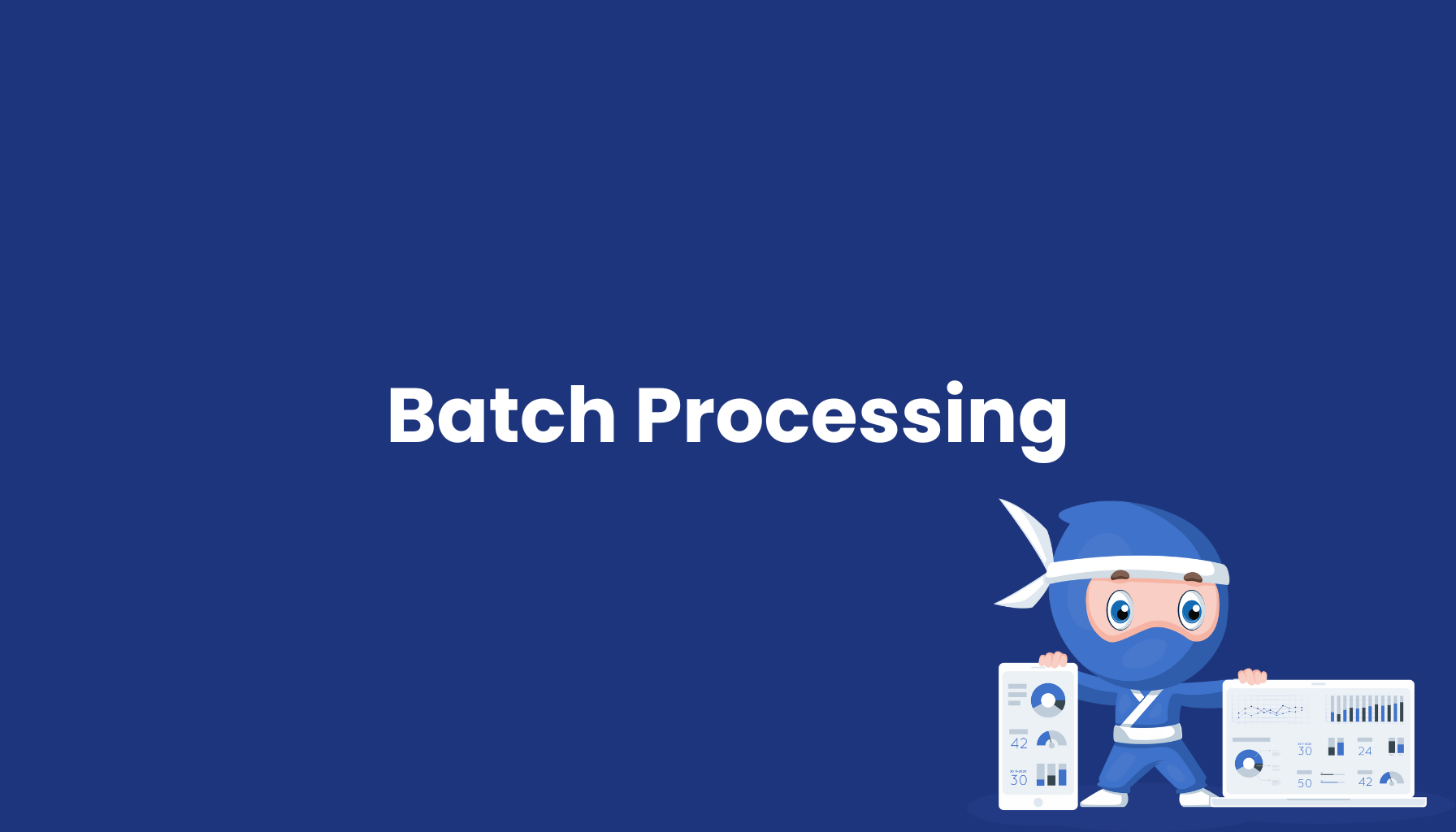Batch Processing

Definition
Batch Processing is a processing method where large volumes of data or transactions are automatically processed in defined groups (batches) without user interaction at specific times. This efficient method optimizes system resources through sequential processing of larger data volumes and is particularly advantageous for time-uncritical, resource-intensive operations.
Fundamental Principles and Architecture
Batch jobs are typically executed outside main business hours to optimally utilize system resources. Job scheduling systems orchestrate execution order and timing based on dependencies and priorities.
Input-Processing-Output model structures batch processing into three main phases: data collection, processing, and result output. Error handling and recovery mechanisms ensure robust batch operations.
Parallel processing divides large batches into smaller chunks that can be processed simultaneously. Master-slave architectures coordinate distributed batch processing.
Batch Processing Types
Sequential Processing: Traditional sequential processing of one record after another. Simple to implement but time-consuming for large datasets.
Parallel Batch Processing: Simultaneous processing of multiple records or batch segments. Multicore processors and distributed systems significantly accelerate throughput.
Stream Processing Integration: Hybrid approaches combine batch and stream processing for optimal performance with different data types and volumes.
IT System Benefits
- Resource Optimization: Efficient utilization of computing capacities through bundled processing of large data volumes
- Cost Efficiency: Reduced system load during business hours and optimized hardware utilization
- Scalability: Parallelization enables processing of exponentially growing data volumes
- Reliability: Controlled processing environment with comprehensive error handling and recovery mechanisms
- Automation: Minimal manual effort through fully automatic job execution
Applications
Financial Services: End-of-day processing for account closures, interest calculations, and compliance reports. Batch processing of millions of transactions overnight for daily settlements.
Data Warehousing: ETL processes (Extract, Transform, Load) migrate large data volumes from operational systems to analytical databases. Nightly batch jobs update data marts.
E-Commerce and Retail: Inventory updates, price adjustments, and product catalog synchronization between different sales channels. Batch processing for millions of product records.
Telecommunications: Billing systems process Call Detail Records (CDR) for millions of customers. Revenue assurance and fraud detection through batch analyses.
Technological Platforms
Enterprise Batch Platforms: IBM z/OS JCL, Microsoft SQL Server Integration Services (SSIS), and Oracle Data Integrator for traditional batch processing.
Big Data Frameworks: Apache Spark, Hadoop MapReduce, and Apache Flink enable scalable batch processing of big data workloads.
Cloud Batch Services: AWS Batch, Azure Batch, and Google Cloud Dataflow offer managed batch processing services with automatic scaling.
Job Scheduling and Orchestration
Job Schedulers: Cron (Unix/Linux), Windows Task Scheduler, and enterprise solutions like Control-M or UC4 automate batch job execution.
Workflow Orchestration: Apache Airflow, Luigi, and Azure Data Factory define complex batch processing workflows with dependency management.
Dependency Management: Job dependencies are modeled through directed acyclic graphs (DAG). Prerequisites and successors define execution sequences.
Performance Optimization
Chunk Processing: Large datasets are divided into smaller, manageable chunks for optimized memory usage and parallel processing.
Indexing and Partitioning: Database optimizations accelerate batch queries through strategic indexing and data partitioning.
Memory Management: Buffer pool optimization and garbage collection tuning improve batch job performance for memory-intensive operations.
Monitoring and Management
Job Monitoring: Real-time monitoring of batch job status, progress, and resource utilization. Alert systems notify of problems or delays.
Performance Metrics: Throughput measurement, processing time, and resource consumption are continuously monitored for optimization purposes.
Log Management: Comprehensive logging of all batch activities for troubleshooting, audit, and compliance purposes.
Error Handling and Recovery
Checkpoint and Restart: Batch jobs can be restarted at defined checkpoints without complete repetition. State persistence enables recovery after system failures.
Dead Letter Queues: Erroneous records are moved to separate queues for manual handling. Automatic retry mechanisms handle transient errors.
Rollback Capabilities: Transactional batch processing enables complete rollback in case of critical errors.
Integration and Connectivity
API Integration: RESTful APIs and message queues connect batch systems with real-time applications. Event-driven architecture triggers batch jobs based on business events.
Database Connectivity: JDBC, ODBC, and native database connectors enable efficient data transfer between different data sources.
Future Trends
Serverless Batch Processing: AWS Lambda, Azure Functions, and Google Cloud Functions enable event-driven batch processing without infrastructure management.
AI-optimized Batch Jobs: Machine learning automatically optimizes batch scheduling, resource allocation, and performance tuning based on historical patterns.
Hybrid Cloud Batch: Multi-cloud and hybrid batch architectures utilize different cloud providers for optimal cost-performance balance.
Batch Processing evolves into an intelligent, self-optimizing system that efficiently meets modern data processing requirements through cloud-native technologies, AI integration, and event-driven architectures.


